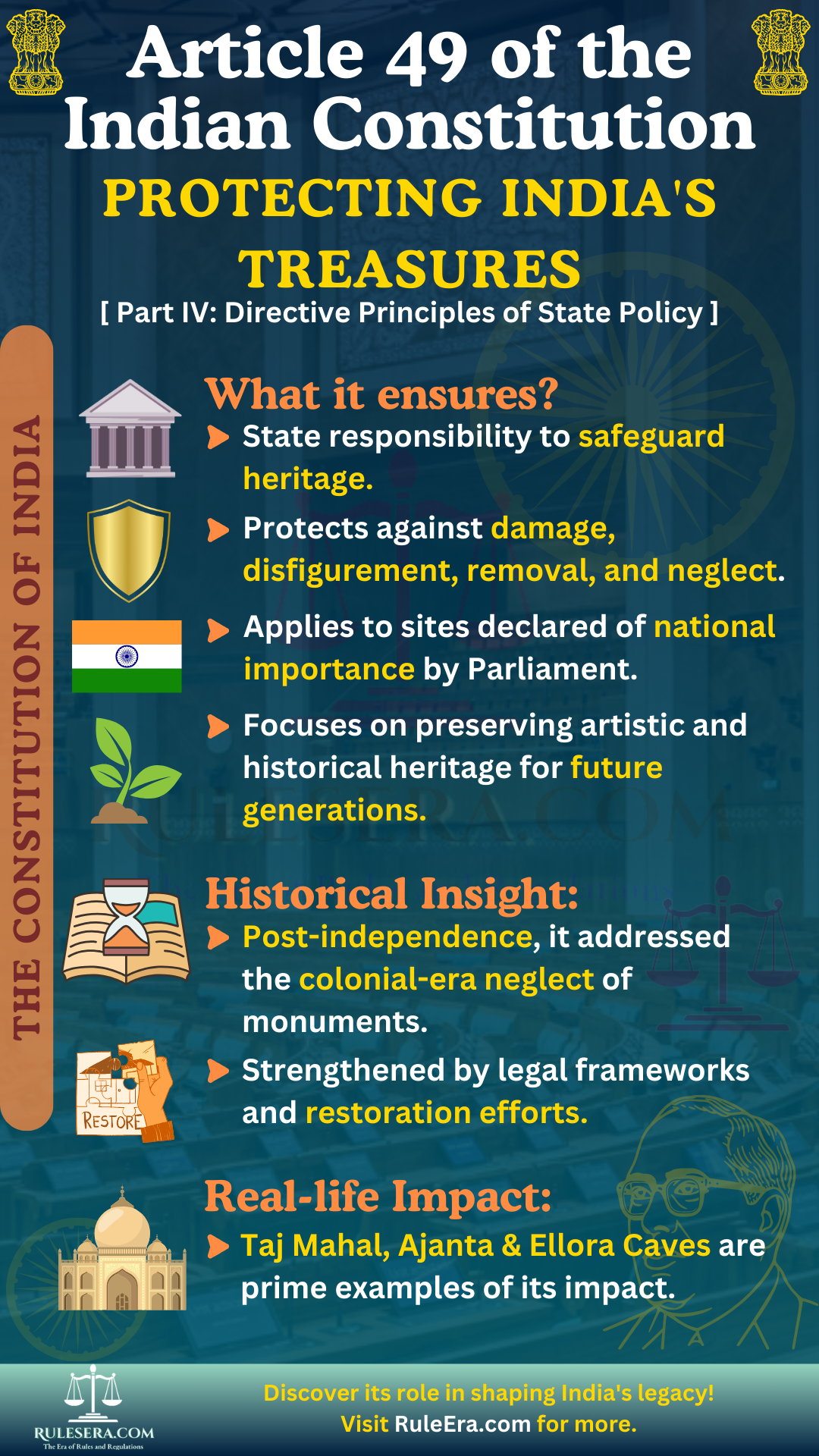Part IV: Directive Principles of State Policy
Article 49: Protection of Monuments and Objects of National Importance

--- Original Article ---
It shall be the obligation of the State to protect every monument or place or object of artistic or historic interest, [declared by or under law made by Parliament] to be of national importance, from spoliation, disfigurement, destruction, removal, disposal or export, as the case may be.
Explanation
Article 49 of the Indian Constitution defines the State's obligation to protect monuments, places, and objects of national importance. This article highlights the preservation of India’s historical and cultural heritage, mandating protection from any form of damage or disfigurement. The protection applies specifically to those monuments or objects declared by Parliament or under a law made by Parliament to be of national significance.
Obligation of the State
The article makes it obligatory for the State to safeguard all monuments, places, and objects deemed of national importance from spoliation, disfigurement, destruction, removal, disposal, or export. This protection extends to both the physical preservation and the prevention of any form of damage or neglect.
Declaration by Parliament
The scope of Article 49 applies to monuments or objects officially declared as being of national importance by or under a law made by Parliament. This declaration is essential for classifying a site or object as deserving of State protection.
Amendments and Real-Life Examples
- Amendment: The phrase "[declared by or under law made by Parliament]" was added to clarify the legal framework determining which monuments and objects fall under State protection.
- Taj Mahal: This iconic monument has been protected by various preservation projects, including efforts to reduce environmental damage, under the provisions of Article 49.
- Ajanta and Ellora Caves: The State has intervened to protect these ancient sites from overcrowding and environmental damage, ensuring their preservation for future generations.
Historical Significance
Article 49 was born out of post-colonial India's need to preserve its rich heritage, much of which was neglected during British rule. By emphasizing the protection of monuments, this provision highlights the importance of preserving India’s cultural and historical legacy, ensuring that future generations can inherit and appreciate these invaluable national treasures.
Legislative History
Originally drafted as Article 39 in the draft constitution, Article 49 was adopted with minimal debate and no objections. The inclusion of this article reflects the clear consensus on the need for the State to safeguard India's historical and cultural heritage.
Debates and Deliberations
During the Constituent Assembly discussions, Dr. B. R. Ambedkar, the Chairman of the Drafting Committee, proposed the inclusion of the word "disfigurement" after "spoliation." This amendment was accepted unanimously by the Assembly. Consequently, Article 49 now emphasizes the State’s obligation to protect monuments, places, and objects of national importance from spoliation, disfigurement, destruction, removal, disposal, or export.
Frequently Asked Questions (FAQs):
The State is obligated to protect every monument, place, or object of national importance from spoliation, disfigurement, destruction, removal, disposal, or export. This protection is critical for preserving the nation's historical and cultural heritage.
Monuments and objects of national importance are those declared by or under a law made by Parliament. Famous examples include the Taj Mahal and Ajanta Caves, which receive protection and preservation under Article 49.